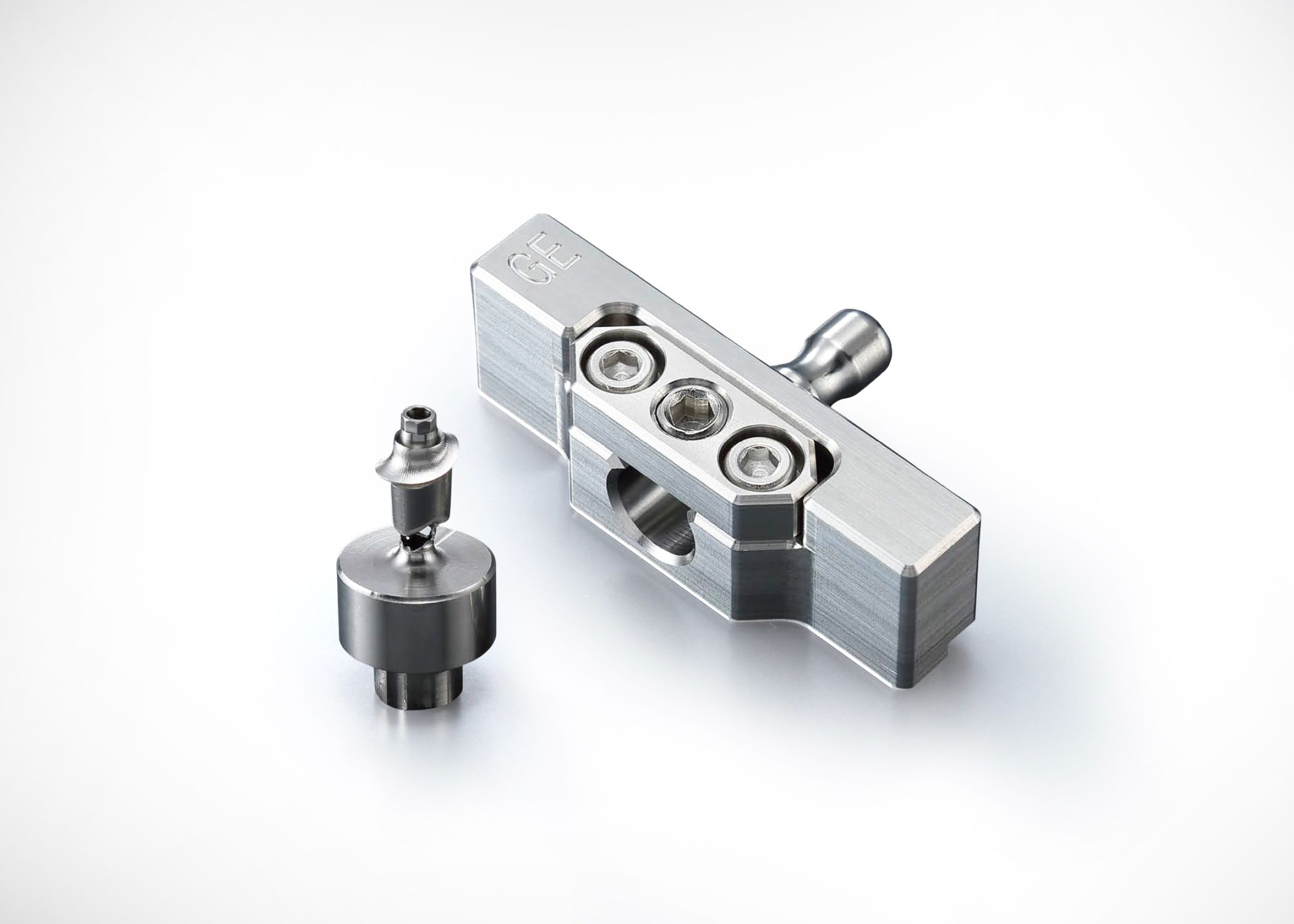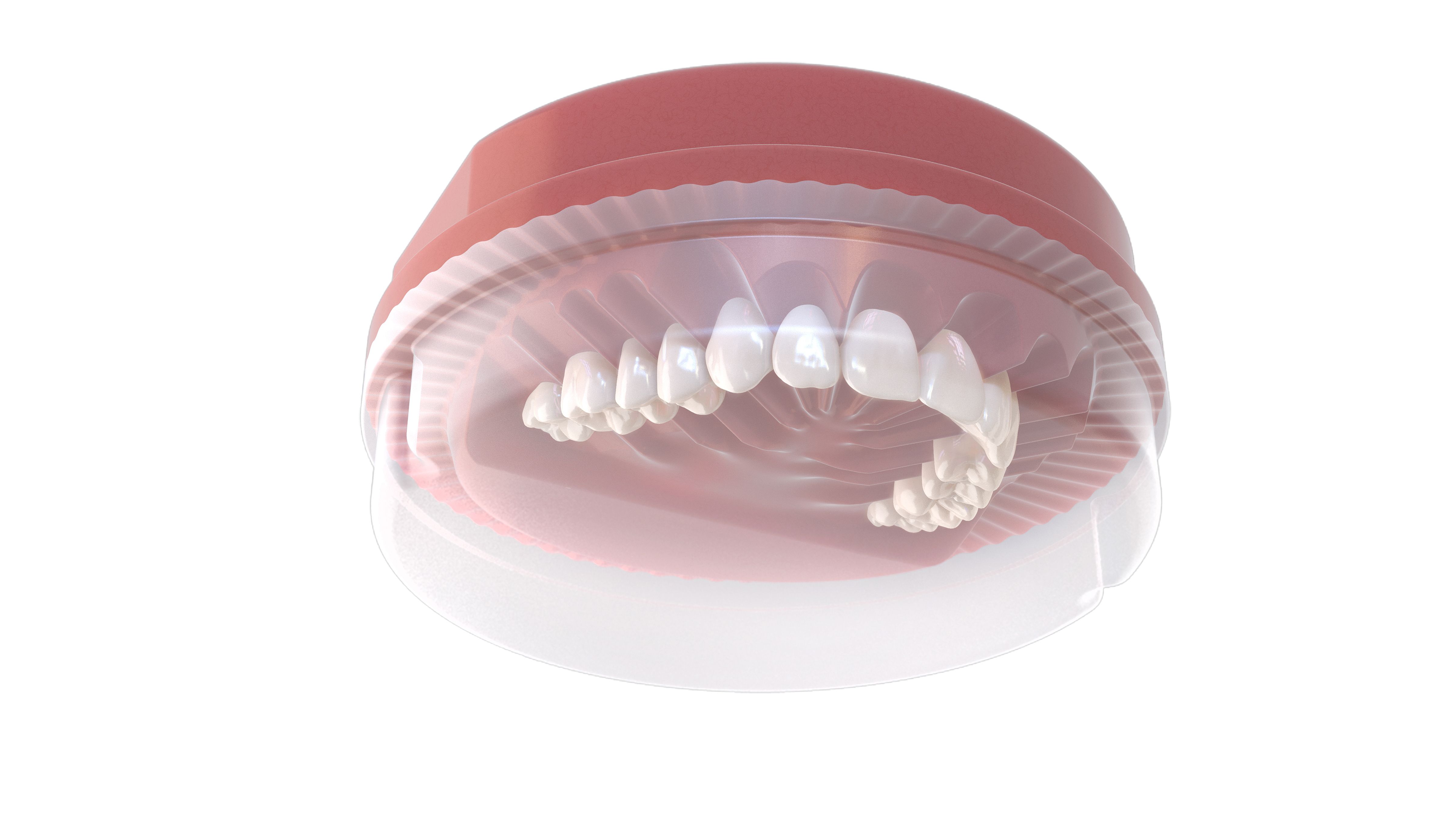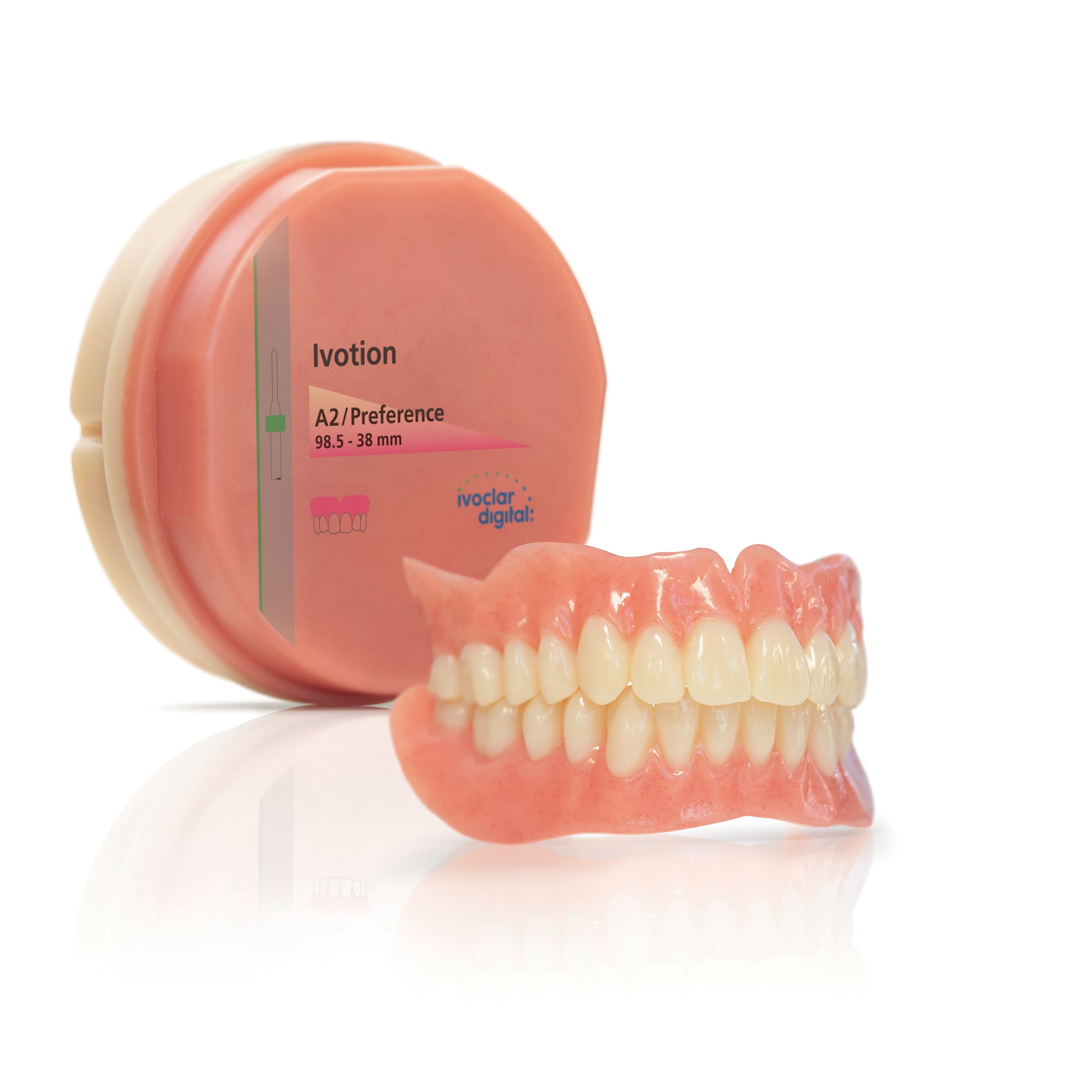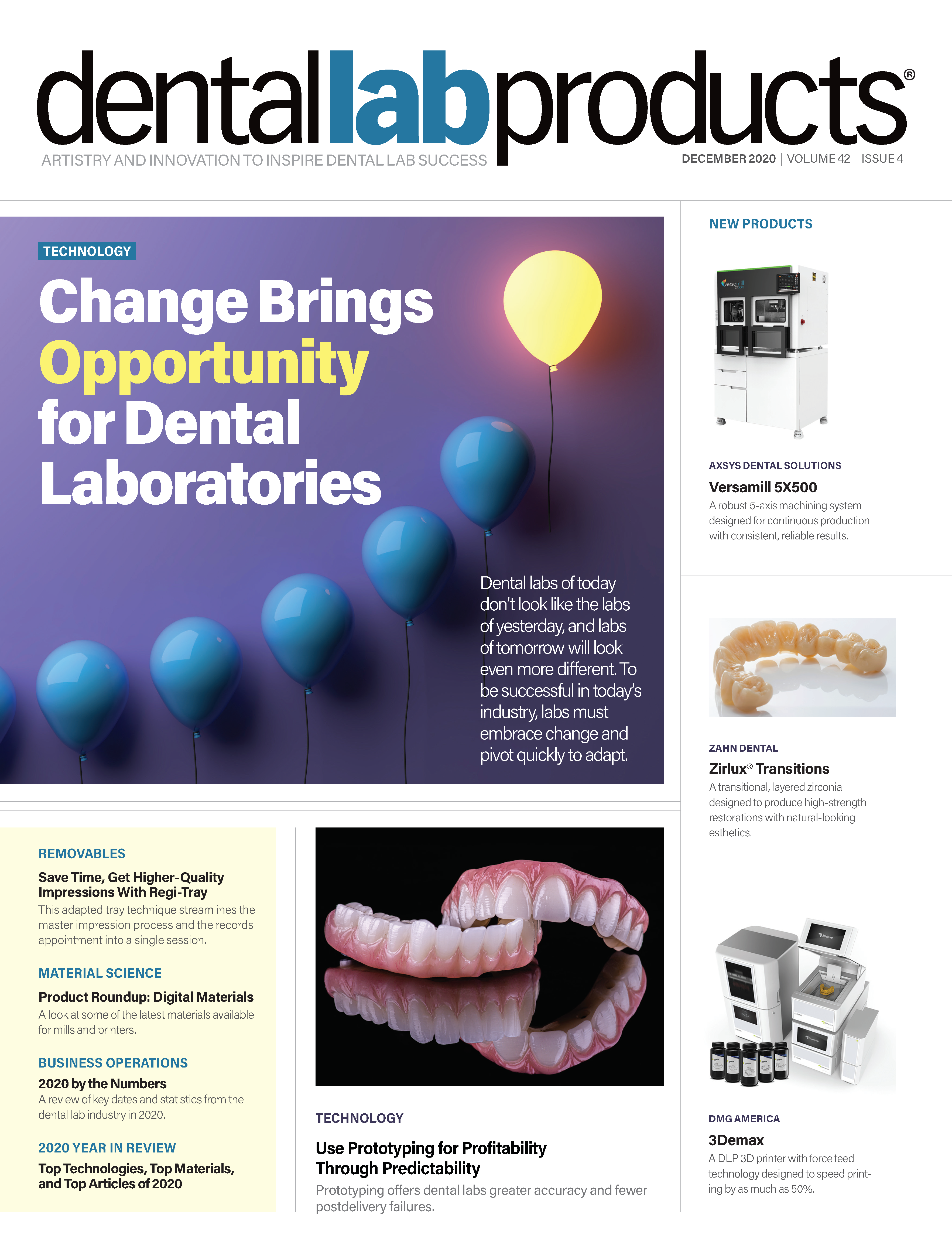Changes Bring Opportunity for Dental Laboratories
Dental labs of today don’t look like the labs of yesterday, and labs of tomorrow will look even more different. To be successful in today’s industry, labs must embrace change and pivot quickly to adapt.
© Colin Fearing / stock.adobe.com

Stanley Kubrick’s classic 1968 science fiction film 2001: A Space Odyssey tells the tale of how human evolution is monitored by extraterrestrial intelligence, beginning in Africa when prehistoric humans learn how to use animal bones as weapons. Millions of years later, humankind has advanced to the point of exploring the moon. The aliens knew that change was inevitable, and they wanted to keep tabs on human progress.
Most people dislike change, but it is unavoidable. It’s inevitable for the individual, but it’s also inescapable—and, as it happens, necessary—for business. Factors that drive change for dental laboratories include technological innovations, business environment, and clinician expectations.
Technology Drives the Changes Affecting Dental Labs Today
Change between the clinic and the lab doesn’t occur in just one place. It affects everything from basic communications to advanced materials to innovative technologies.
“We’ve seen so many changes in the past 10 to 15 years with digital dentistry, zirconia, and milling,” says Greg Martin, CDT, TE, national director of sales at Renfert USA. “It really revolutionized the industry. And for the dentist, I think it was a very positive thing. It made the work more predictable. We’ve had more and more lifelike materials developed. For the dentist, it’s been a win. Subtractive technology was milling. Now we have additive technology with printing, and I think as new materials begin to be produced, that’s going to be one of the biggest changes in the next 5 to 10 years—the materials that are produced for the 3D industry.”
Materials affect restorations and processes, something in which both dentists and labs have a stake.
“Right now, I actually think [change is] happening in materials,” says Conrad Rensburg, owner and head of the Dental Implants Division at Absolute Dental Services in North Carolina. “For the past 10 years, we’ve seen all this technology come to light. When the analog side was dragging, we saw milling units catch up a little bit with computer-aided design. Today, milling has hit its peak. I think from here on out, there’s not going to be a whole lot of improvement on milling, so we’re seeing printing now coming into play. The problem for printing has always been that they haven’t had decent materials, and we’re now finally seeing the polymers starting to catch up with the technology. So my crystal ball for the future is that we’ll be printing crowns in the next 5 years. We’ll probably see the complete eradication of milling.”
Those technology-driven changes, Rensburg observes, lead to greater efficiencies.
“The changes are driven by more efficient workflows,” he says. “And I think most of those changes are driven by labs requiring more efficient workflows so that they can solidify their position in the market. My use for a new material is explaining or teaching a new workflow to my clinicians.”
EASY Blank CAD/CAM wax from Renfert is ideal for the digital production of crowns and bridges for press and casting techniques.

On a grander scale, the clinic/lab relationship is evolving, with traditional roles changing.
“For laboratories and clinicians alike, I see dentistry as a whole continuing to evolve into the digital world with the ongoing expansion of innovative technology and material capabilities,” says Lisa Aguirre, product manager for Dental Solutions at Roland DGA Corporation in Irvine, California. “I expect demand for bringing services in-house and in-office will continue to increase and that there will be less outsourcing in general.”
Pandemic Bolsters Use of Digital Technology
For better or worse, the coronavirus disease 2019 (COVID-19) pandemic is also driving change between the clinic and the lab.
“There’s a lot of change in technology,” observes David Turpin, owner of Spartan Dental Lab in Lansing, Michigan. “Since COVID-19, I’ve seen more dentists wanting to utilize technology, especially scanners.”
The pandemic seems to have helped sharpen our focus on technology.
“It’s been an interesting year,” says Donald Bell, vice president of marketing—digital technologies at Ivoclar Vivadent. “Just prior to COVID, there was an interest in technology in general. So, scanners were moving at a reasonably quick pace into the dental marketplace. I think even chairside, [computer-aided design/computer-aided manufacturing] was being done at [a] consistent pace as well. You can 3D print now, and there was the adoption of cone beam into practices. A lot of things moved at a steady pace. What we see is that offices have tried to adapt to the circumstances. With COVID, doctors have a lot of restrictions in their offices that may dictate how many people they can see. There are some physical constraints of [personal protective equipment] and disinfection requirements that are now put on the office. There are protocols in place to ensure that, but I think this just highlights a lot of the concerns in the marketplace.
“We’ve seen and, anecdotally, heard [about] upticks of scanning technology through the course of 2020,” Bell continues. “It’s done a couple of things: It’s allowed offices to communicate in a timelier manner with their lab. There’s also the learning curve with implementing the technology, but I think it’s also allowed them to be a little bit more interactive with their lab.”
In 2020, just as video conferencing has changed the conventional workplace and teledentistry has helped clinics reach patients, contact between lab and clinic has evolved.
“Communication seems to be driving change,” Martin says. “And that’s just really with the current situation. We’ve been forced to have more virtual means of interacting with each other. Dentists and labs, and manufacturers and the end-user, we’ve all kind of been forced to this new, virtual environment. And I think that’s only going to grow for the immediate and the coming future. It’s going to be the new norm of live, virtual chats.”
Lack of Traction Holds Back Changes to Dental Labs
Some areas, however, have not evolved as the industry anticipated.
“Digital workflows are increasing while manual workflows continue to decrease in the laboratory space,” Aguirre says. “Much of this is due to the time and cost efficiencies provided by digital workflows. Another big factor is that clinicians today expect esthetic, precisely fitting restorations and prosthetics with little or no turnaround time and at a minimal cost. As a result, labs are forced to be more productive in a cost-effective manner to meet the expectations and demands of clinicians.”
But digital workflows don’t seem to have gained the expected traction.
“Everybody thought it would be intraoral scanning when it first came out,” Martin says. “I heard, ‘Oh no. If we’re all scanning, we’ll replace [vinyl polysiloxane (VPS)] impression technology.’ I was told in a seminar, ‘There won’t be an impression taken 5 years from now.’ Well, that was in 2000. Guess what? They’re still taking VPS impressions because they are tried-and-true.”
The EASY View 3D video microscope from Renfert features a 3D monitor for viewing, processing, and quality control, as well as educational and training purposes.

The ability for dentists to do it all themselves is still, to a degree, lagging behind where it was expected to be.
“I thought the offices would adopt technology to scan and mill in-office or produce in-office at a little bit faster rate than probably has happened,” Bell says. “And I don’t exactly know why that is. I just see the technology, how precise it’s gotten over the years, the ability to scan, design, and mill or to scan, design, and print. There have been iterative steps, but it’s gotten really good, accuracy-wise. And the materials continue to evolve, and the applications continue to evolve. But offices have been slower to adopt those types of technologies than I guess I thought they might.”
Making Change Happen
It’s one thing to say, “The lab needs to change.” It’s another to say, “This is how to do it.” The ways that labs embrace change are as different as the labs themselves. For Turpin, change is facilitated by coaching his staff.
“It’s just the training of how to accept the cases when we get them,” he says. “Traditionally, we’d pick up an impression, and it’d go through the lab one way. And now we have to retrain to have it go through a different process—[and retrain people] how to use some of the software for those cases and get them into the production stages.”
For change to be successful, it needs to occur at both the lab and the clinic. And both must understand what’s changing and how it affects each of them.
The lab can lead to that educational opportunity.
“Our focus is to educate clinicians,” Rensburg says. “So, I really try to drive technology back to my clinicians. I’m not as much driven by clinicians as I’m trying to improve their clinical experience. We’re trying to lead instead of follow.
“I’ll adapt a new product, and I’ll write a protocol manual. I’ll send it out to everybody and say, ‘This is the new product. This is the new workflow. This is how I save you time and money.’ So for me, as a dental lab, I use technology to be a driver instead of being an adapter or an adopter. We normally offer it before they know about it, and if they don’t know about it, we use it as a teaching opportunity.”
Not surprisingly, technology helps expedite change.
“Digital dental workflows are an essential part of how dental labs are adapting to the changing world of dentistry and the increased demands and expectations of clinicians today,” Aguirre says. “Digital dental workflows provide affordable, precise, and predictable outcomes with reduced turnaround times.”
Refert’s titanium dioxide-free Scanspray for digital workflows allows for accurate edge representation and undistorted surfaces.

So-called early adopters are the first to embrace new products and technologies. As that technology evolves and matures, more of the mainstream starts adopting it. But for that to occur, they have to see that it works and that it will be cost-effective and profitable.
“Somebody that might be considered an early adapter, they may buy different pieces of technology and try to figure out how to make it work,” Bell explains. “I think the broader market does not do that. The broader customer base wants to say, ‘OK, I’m willing to look at something, but I want to know that it works. I want to know what steps are involved to make it work. I wonder what I have to do, how much it’s going to cost per unit or cost per application. And I should be able to define that very clearly. I expect that I’m going to be trained on it thoroughly and have support to be able to ensure that this works predictably.’”
Clinics Versus Dental Labs: Who Leads Change?
It’s the classic chicken-and-the-egg quandary: Where does change first occur? Who leads that change? Do dentists embrace the next big thing or do the labs? Even the concept of how change occurs seems to be changing.
“In the past, it was really, ‘OK, this is what I want, and this is the way I want it done.’ And labs did it,” Martin says. “It was a standard across the board. There weren’t so many different ways to produce the same results. Now, as technology has come on, I really think it is a synergistic, team effort. It is such a technology-driven industry. Now, it really is the lab driving the change because as new technologies and materials are being developed, it’s the lab that’s really leading that change, and they’re communicating these new trends to their dentists.
“They’re the ones that are saying, ‘Hey, doc, this new material came out.’ Dentists are so worried about so many different things. They’re worried about their patients. They’re worried about their office staff. They’re worried about running their business.
“A lot of them don’t have time to be educated and updated constantly on the new materials and all the new technology. They’re more focused on the end result in the lab because most of the new technology is happening on the lab side right now. The labs are the ones that have to update.”
The DWX-52DCi dental milling machine from Roland DGA features a 6-slot automatic disc changer and a 15-station automatic tool changer for efficient, exceptional restorations.

Change is an opportunity for labs to be leaders and guide their client doctors to new technologies and materials.
“I try to be on the forefront of the newer stuff coming,” Turpin says. “I try to know all I can before my clients do. I hope to have answers for them when they ask, instead of telling them I’ll have to research and get back with them. In certain aspects, I think this helps labs drive the change.”
That’s not to say that change is always lab-driven. It can be a collaborative process.
“I think it goes both ways,” Bell says. “I think dentists, if they have good relationships with their labs, rely on their lab partners and technicians to ask questions, whether it’s materials, processes, even scanning technology. It’s a really good resource and a really trusted resource for dentists. They’re willing to be very open-minded, asking questions. So, I think if I’m Dr Bell and I’m looking at technology, I’m going to ask questions like, ‘Hey, I’m looking at picking up a scanner, and I’m looking at utilizing those to send you digital impressions. How does that work? What do you need from me? Does anything change? What would you like me to do? Do I have to adapt to anything because I’m going to be sending my cases to you on a consistent basis?’”
But there really is no hard, fast answer to this question. Change occurs differently in unique lab/clinician relationships. Sometimes it depends on the clinic’s clientele.
“This change typically happens organically and is dependent on regional demographics,” Aguirre says. “For example, a region with an aging or geriatric population would typically experience a greater demand for digital dentures, whereas a region with a sizable Generation X population would be more likely to experience a greater demand for everyday digital crowns, bridges, veneers, and restorative dental implant workflows.”
Business 101: The Importance of Change
Dental labs of today don’t look a lot like the labs of yesterday, and the labs of tomorrow are going to look even more different. Embracing change helps with that growth.
“Convincing my grandfather and father to embrace change was [a difficult] road,” Turpin says. “Looking back now, I understand how this was hard. They were used to doing the same process the same way for years. That’s not the case now, with technology changing every day. You have to be willing to accept the change.”
Martin agrees: “I think it’s paramount. I think really, it’s absolute. Labs have to be willing, if they’re going to be successful in today’s industry, to pivot very quickly. Unfortunately, you have a much lower number of [technician candidates available]. If you’re trying to grow, it is really tough. So, how do you fill that gap? Well, lots of times you have to implement new technology. And if you don’t have that product, or you don’t have that technology, or you can’t produce those things, labs will suffer.
“That’s why you’re seeing a lot of labs, even the ones that used to just traditionally offer crown and bridgework, now offering full service. Now, they’re offering removable prostheses [and] they’re doing sleep apnea devices, or mouth guards, or all these other things that are extra revenue sources because they can’t really just produce the single crown anymore.”
DGShape’s AK-1 Abutment Attachment can create custom abutments. Plus, special milling burs can process premilled titanium blocks with ease.

It is a truism for business, especially dental laboratories: Labs must embrace change.
“You cannot compete in the 21st century if you do not have digital capability—if you’re still layering ceramics because you don’t think that zirconia can compare, if you’re still waxing by hand because you don’t think you can use wax milling or those kind of things,” Rensburg observes. “I think those labs are headed for trouble. There was a study a while back that said the average age of [technicians in the US in the removables field] was 60-plus. That means we’re not getting new, young technicians coming into the removables field.
“If you look at the dental technology and educational facilities around the country, [students aren’t] applying to them anymore. So, our industry is experiencing a huge drying up of qualified hands. This is no longer a question of ‘Do I want to go digital?’ You will not have hand processes that you can support with humans in the next 10 years.
“If you don’t have this digital technology, as a dental lab, you have to look at your technicians as artists; you cannot look at them as people who flask or press or clean a denture or chip the stone out. You’ve got to see them as people who place the final hand touches on the final product.
“So instead of setting up teeth, you do it digitally. You have a digital designer who can set up 28 cases a day. If you have a guy who does it with hand processes, he can maybe do 2 or 3 a day. To be able to survive in the next 10 years, you have to adapt to and adopt digital technology. It is an absolute must in our industry.”
What Are the Future Drivers of Change For Dental Labs?
Change has occurred, and it will continue to occur and affect labs.
“Digital dental workflows and solutions have progressed significantly over the past decade and will continue to lead the future of restorative dentistry as a whole,” Aguirre observes. “Digital solutions have proven to consistently provide quality, reliable, precise, and affordable restorative and prosthetic solutions in a fraction of the time of traditional workflows.”

Ivotion from Ivoclar Vivadent are tooth-colored PMMA discs that offer fast and easy bonding of tooth segments. Its shell geometry (top) is a 3D tooth and dental arch structure located within the disc.

Rensburg looks to new clinician competencies as a driver of positive change.
“I think the biggest change is coming with the new generation of dentists,” he says. “[They] are very digital-savvy. They don’t use Facebook. They use Instagram. Those are the changes that old guys like me need to be aware of because that’s how you market. They don’t read newspapers.
“A lot of the change in our industry is driven by young clinicians coming into the market saying, ‘I don’t want to take a [polyvinyl siloxane (PVS)] if I have a digital impression.’ And they’re learning to use these technologies at the front end of their careers. ‘I don’t see the reason to take a PVS impression.’ The [younger generations] in the client base are driving this change. A lab tech needs to realize that clinicians are starting to ask for it and that if you can’t supply it, they will go someplace else.”
Change may occur naturally and gracefully, or unforeseen circumstances may force one’s hand.
“This situation with COVID-19 really forced everybody to do a step back and say, ‘Wow, I would’ve never seen this one coming, and now what?’” Bell says. “I think everyone’s gone through this, and probably still is, to some extent. We’ve started to adjust businesses, reopen under certain conditions. And when I walk my dogs in the morning, I have a mask on. Or we go shopping, and I have a mask on.
“You adapt to the situation. This is a harsh reminder of how things can change. You try to adapt to what is put in front of you and move forward and continue to grow and not get bogged down. [Adapting to the pandemic is] really the biggest change we’ve ever gone through, at least in my lifetime. It’s really humbling. I can’t think of a better way to describe it.”
It’s hard to change one’s habits. As big a step as it was for prehistoric humans to learn that animal bones could be used as weapons, it was a similar evolutionary step for 20th-century man to walk on the moon. And it necessitated a fair measure of change for either to occur.
Dental labs’ use of technology, methods, and materials lands somewhere between animal bones as tools and lunar exploration but being open to changes facilitates their advancement and ensures their long-term survival.
